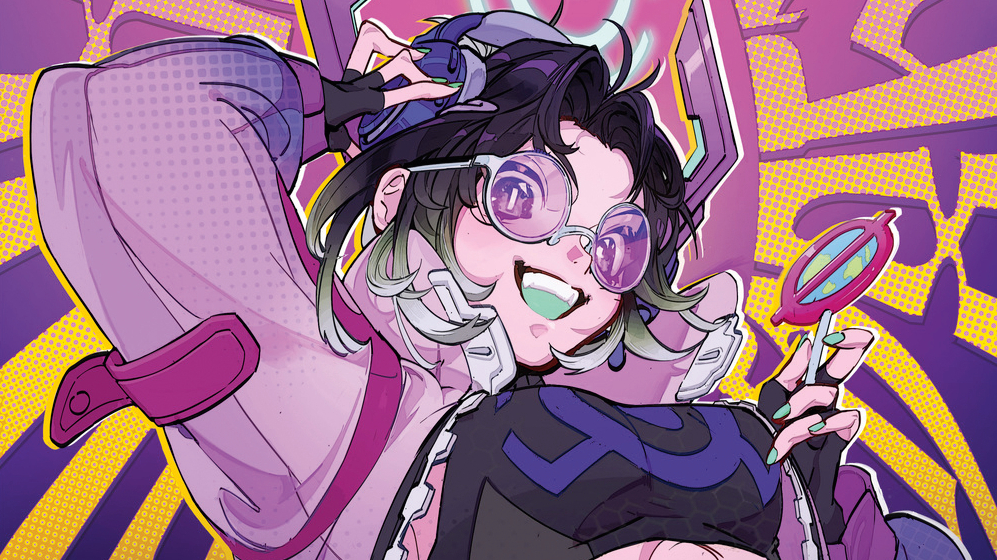
Marvel may have a permeating presence in pop culture, but its forays into video games haven't always been a great success. From 2017’s thoroughly disappointing crossover fighting game Marvel vs. Capcom: Infinite to 2020’s blockbuster flop Marvel’s Avengers, uncanny adherences to the MCU have led to uninspiring character designs that fell short of their big-screen counterparts.
Marvel Rivals has, however, smashed expectations since its launch last December, having already reached 40 million players worldwide as of February. That’s no mean feat given that it’s a team-based PvP shooter, a genre that faces fierce competition and only a few emerge victorious.
Contributing to its success is that it’s the most visually stunning Marvel game ever made, reinvigorating a rich history of comic book superheroes and supervillains in the same way Spider-Man: Into the Spider-Verse has affected the animation industry. And just like Sony Pictures Animation’s films, Rivals combines the most cutting-edge technology with hand-drawn comic book aesthetics, while also having Marvel’s rich history and catalogue to dive into (see our pick of the best digital art software and the best drawing tablets for your own work).
We sat down with the game’s art director Dino Ma to learn how this unique artistic style and visual system, referred to as “Dynamic Comic Style”, was created.
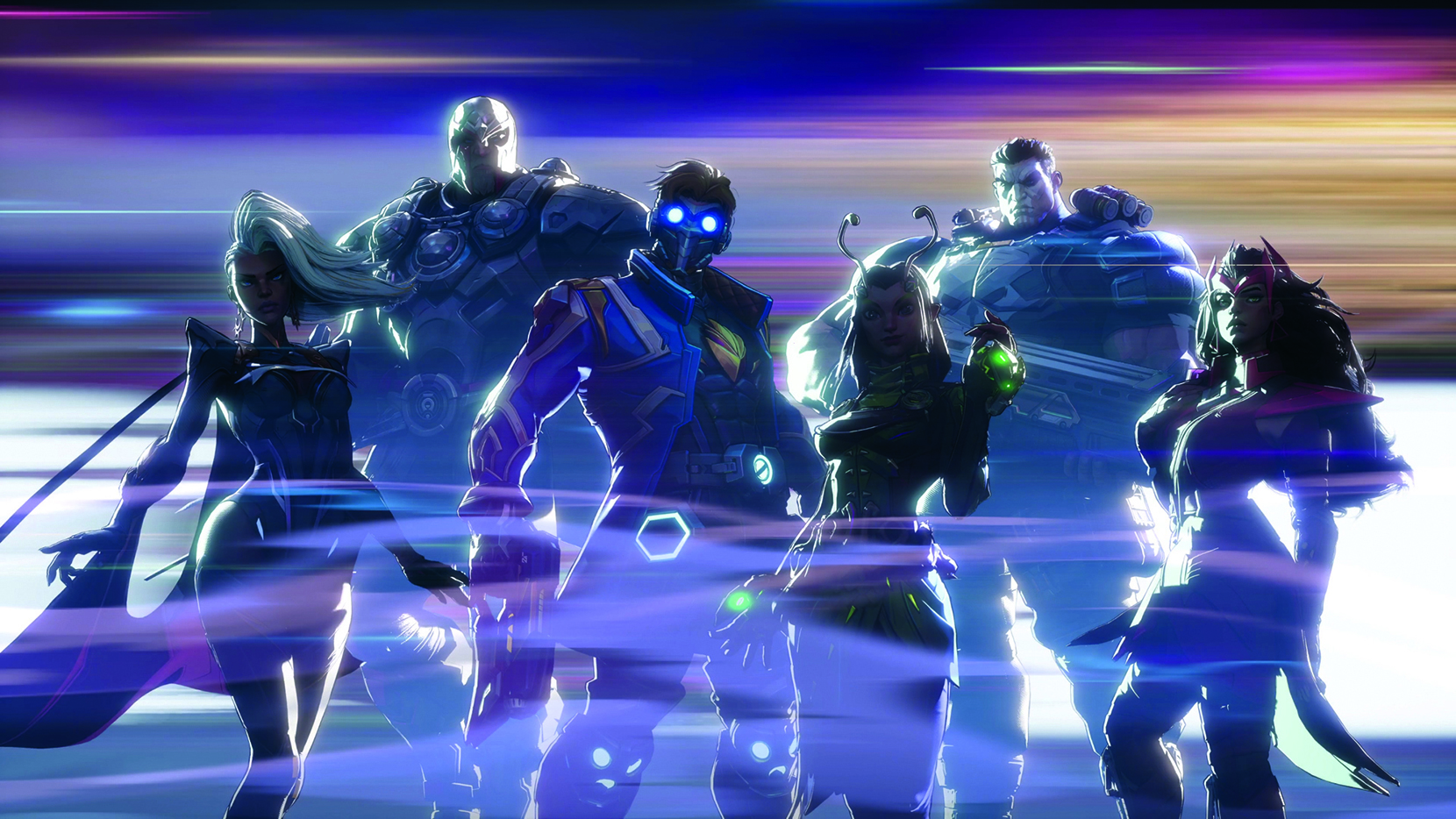
It’s not the first time Chinese studio NetEase has made games with a Marvel licence, having previously developed two titles in Marvel Super War and Marvel Duel, though these were for mobile and only released in select Asian territories. Rivals was an opportunity to work on a larger canvas with the latest Unreal Engine 5 tech on current-gen platforms.
“I believe that Marvel Rivals stands out with its distinct gameplay mechanics,” says Ma. “In developing the visual style, I not only focused on the overall aesthetic, but also considered how it aligns with the genre and gameplay dynamics.”
It’s worth noting that while fully licensed to use any of Marvel’s IP from its 85 years of rich history, the MCU still provided “a wealth of inspiration” alongside the comics themselves, the game recreating in its animation style sequences and camera movements that are direct nods to iconic moments from the films.
The decision to include lesser-known Marvel characters
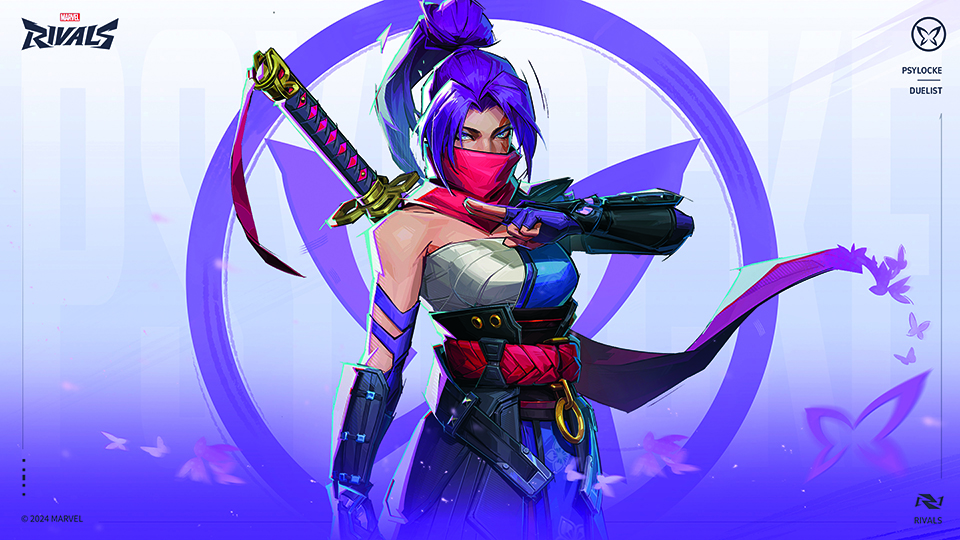
It’s also perhaps no coincidence that the narrative sees Doctor Doom causing a ‘timestream entanglement’ after clashing with his 2099 counterpart, the multiverse being the current trend while Doom is set to be core for the next phase of films. Yet this doesn’t mean attempting to ape a photorealistic style or simply selecting the most recognisable heroes.
“Marvel Rivals has its own unique world and narrative, where each hero plays a specific role and fulfils their own missions within the story, while we also take into account the gameplay roles that each hero embodies,” Ma explains.
“While we definitely want to include iconic characters like Hulk and Iron Man, we’re equally excited to introduce some lesser-known yet fascinating heroes, such as Jeff, into our game. Our hope is that players will not only enjoy Marvel Rivals, but also come to discover and appreciate all of these characters.”

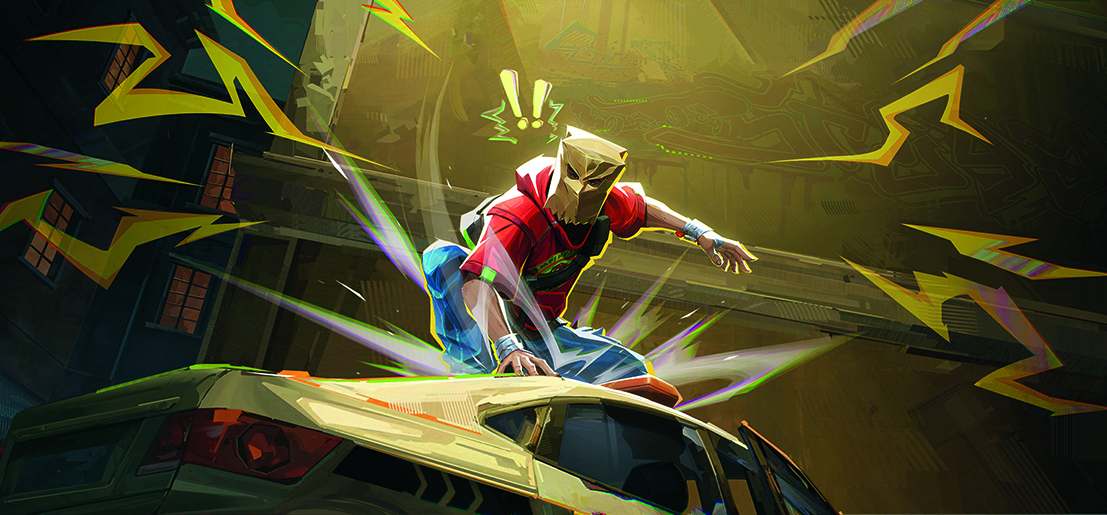
A blend of East meets West
Likewise, developing Rivals’ Dynamic Comic Style didn’t just come from referencing Marvel, as you can also describe the aesthetic as a blend of East meets West. After all, China has its own long tradition of comics and illustration, manhua, as well as ACG, a term to describe the region’s subculture of animation, comics and games, comparable to otaku culture in Japan.
“At the early stages of developing the overall visual style of the game, I drew inspiration from various sources, including anime, animated films, and graphic packaging,” Ma explains. “By incorporating elements of expressionism, we aimed for a vibrant palette with bold brushstrokes, while emphasising the primary colours to enhance the visual energy.”
Evidently, this expressive and exaggerated aesthetic lent itself to portraying heroic characters with superpowers, which also evokes “more intense visual emotions”. Ma adds: “Subsequent elements like the game interface, cutscenes, promotional videos, merchandise and marketing materials are all extensions of this visual system, ensuring a cohesive look across all aspects of the game.”
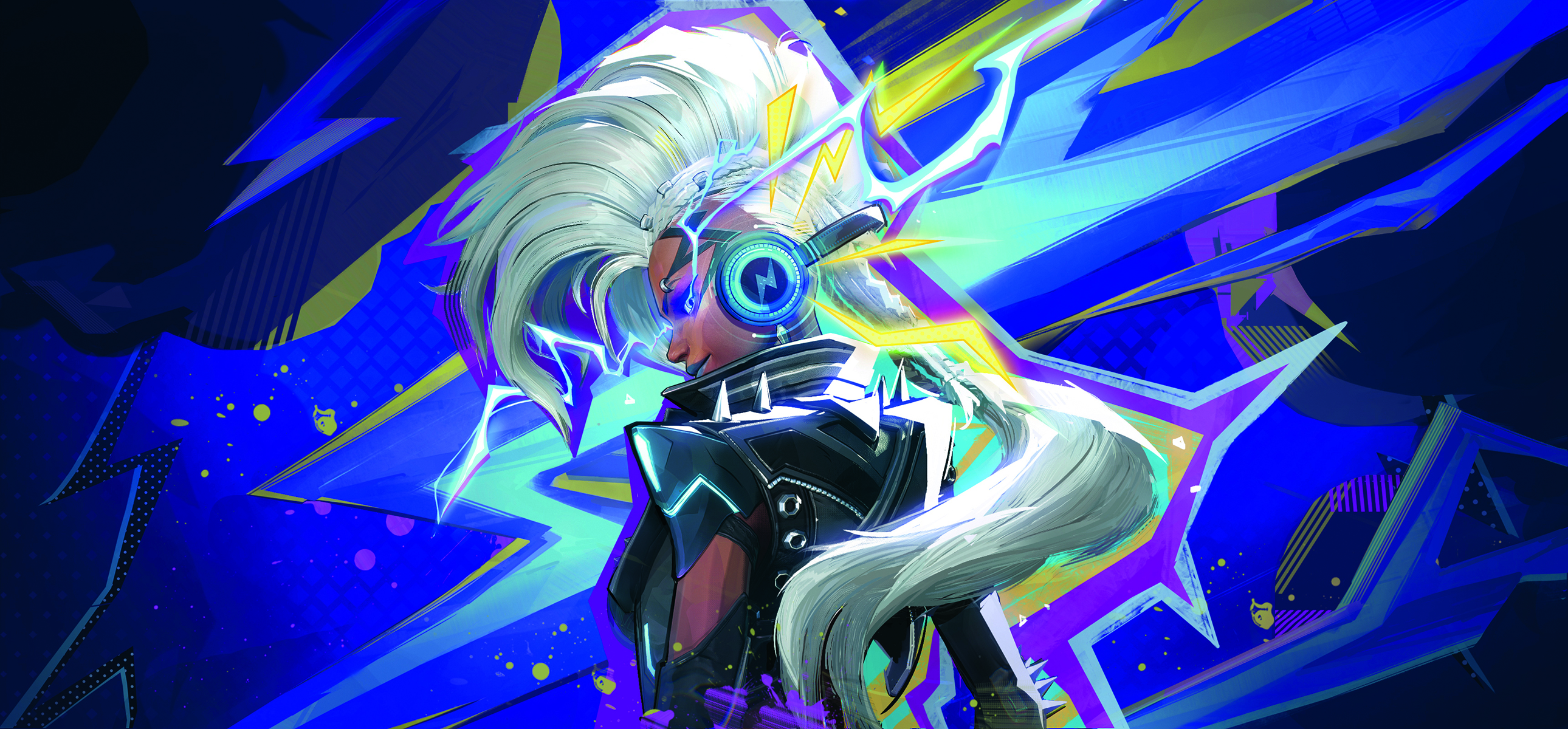
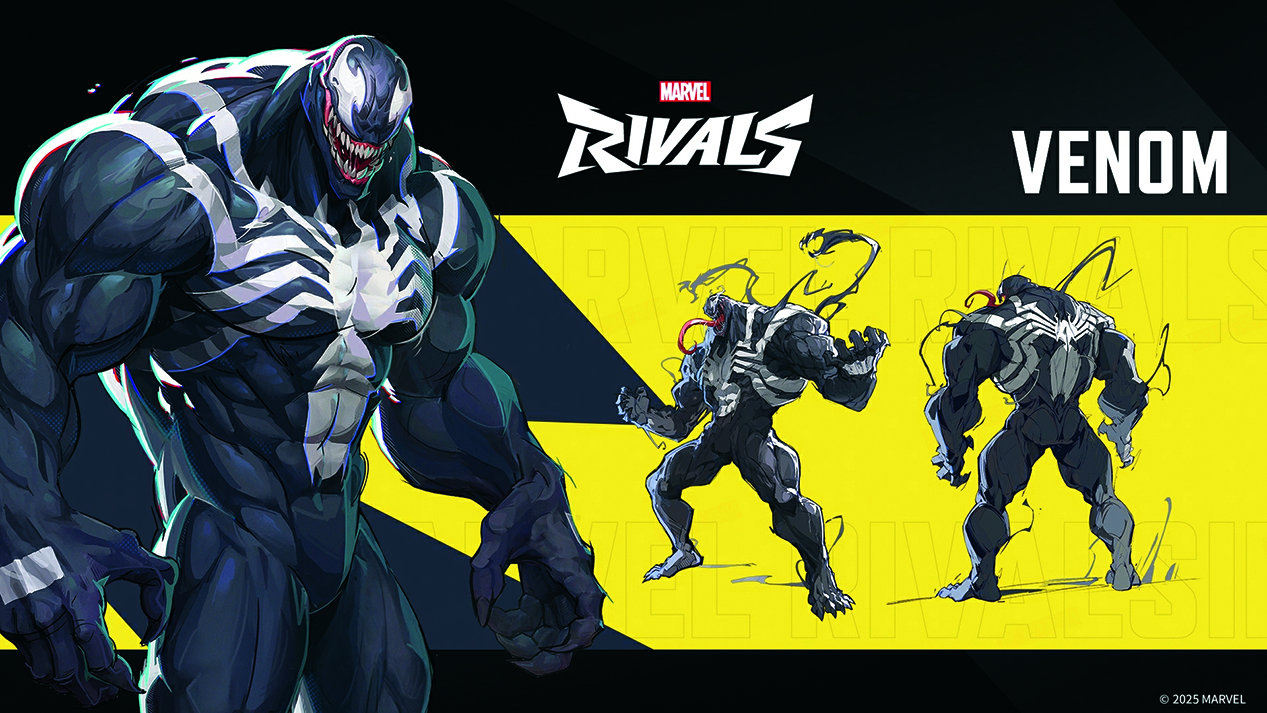
Keeping a 2D mindset for Marvel Rivals
Perhaps the greatest challenge was retaining this ostensibly hand-drawn and painterly aesthetic from the concept and illustrative stage when translating them into 3D character models.
“I’ve observed many products that are quite unique in the concept phase but lose their expressive quality during the 3D execution,” Ma says. “So I’m grateful that as we developed the 3D visuals, we were able to maintain the original 2D stylistic expression.
“The real key to our success was keeping a 2D mindset throughout the development process, adhering to the stylistic characteristics and aesthetics of 2D art. This approach helps our hero characters feel more like they belong within an anime world, providing players with a sense of both familiarity and novelty.”
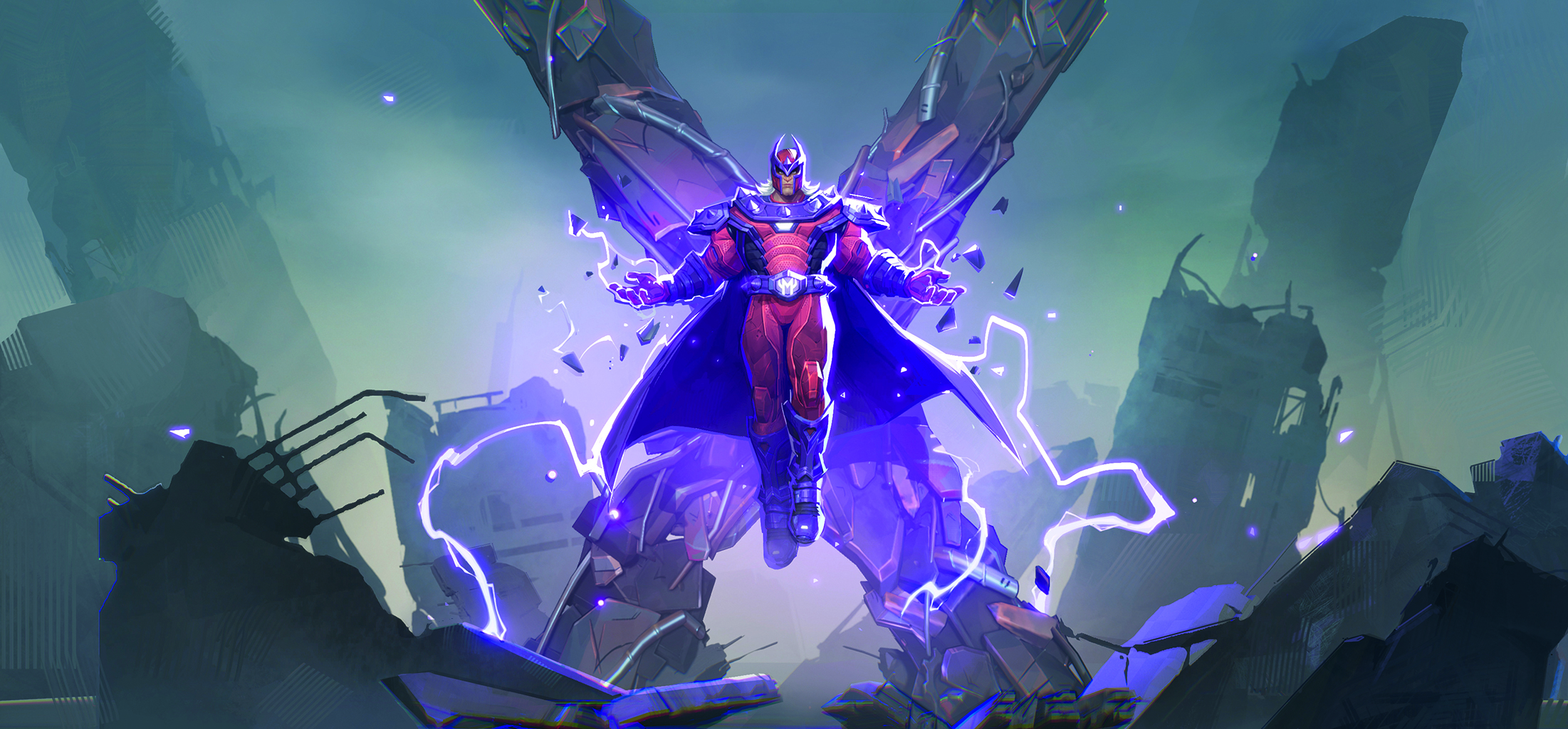
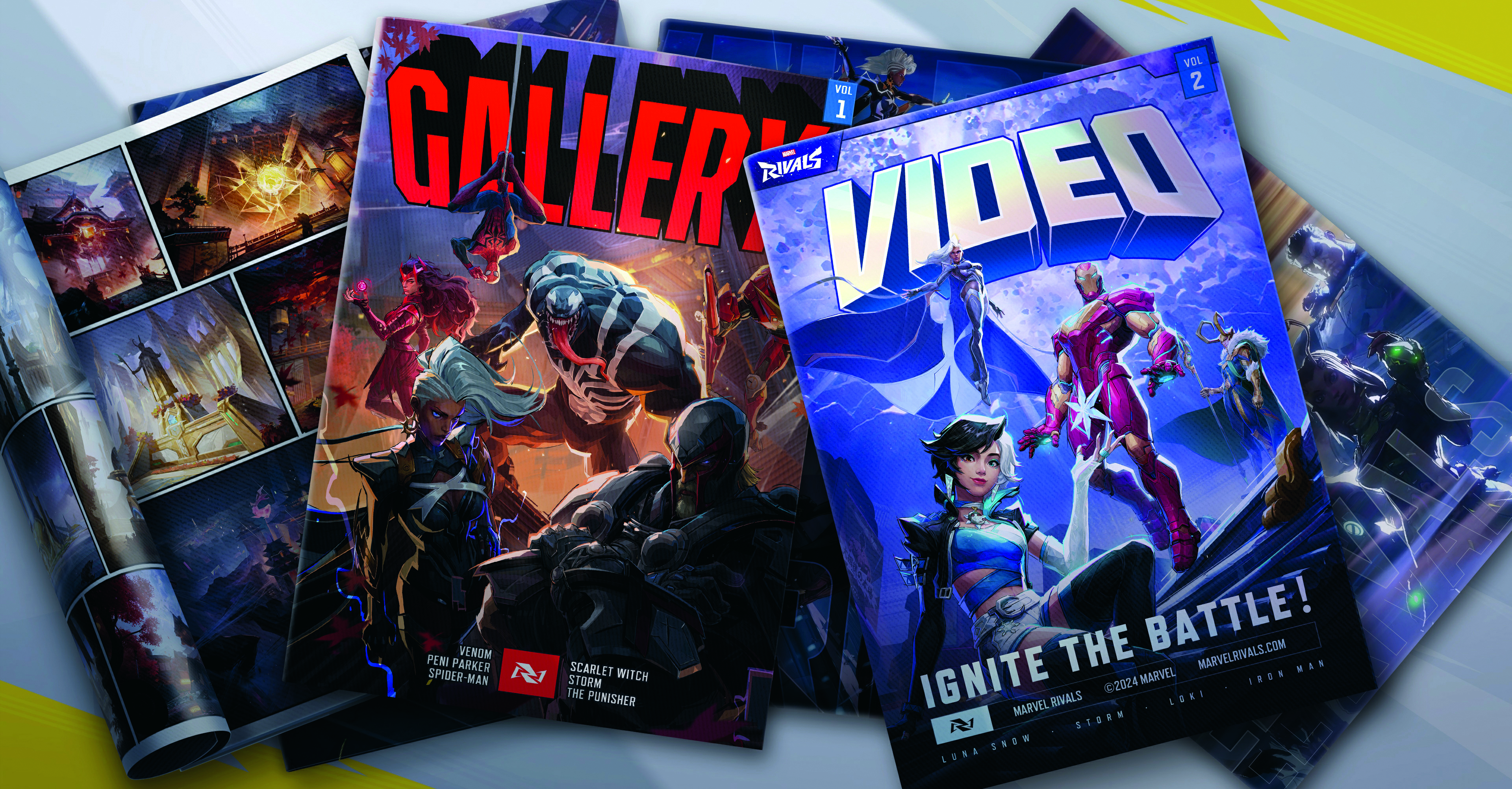
Using Unreal Engine 5 an anime style
This was also important in how the team utilised Unreal Engine 5, a game engine that’s usually highlighted for its ability to render extraordinary levels of photorealism (see our guide to the best game development software). While, for instance, Unreal’s Lumen global illumination system is useful for providing dynamic and realistic lighting effects, it was modified so that its lighting and rendering pipeline was in service of enhancing the anime feel of the visuals.
Ma explains: “When it comes to materials, we decided to focus on maintaining a genuine texture without compromising colour information. By combining stylised textures, we’re able to strike a balance between physically based rendering (PBR) and non-photorealistic rendering (NPR), resulting in materials that showcase the fine detail of next-gen graphics while still adhering to a stylised artistic vision. In skill design, we incorporated anime techniques; elements such as character shapes, effects, movement and speed lines.”
For players, the fantasy of Rivals is embodying these superheroes. But within the parameters of the shooter genre, is there a danger that this is reduced to a shooter with superhero skins? It’s arguably why the gameplay is played in a third-person perspective, the camera pulled back so that you can see your chosen hero’s form, which also helps set it apart from its closest rival, Overwatch 2.
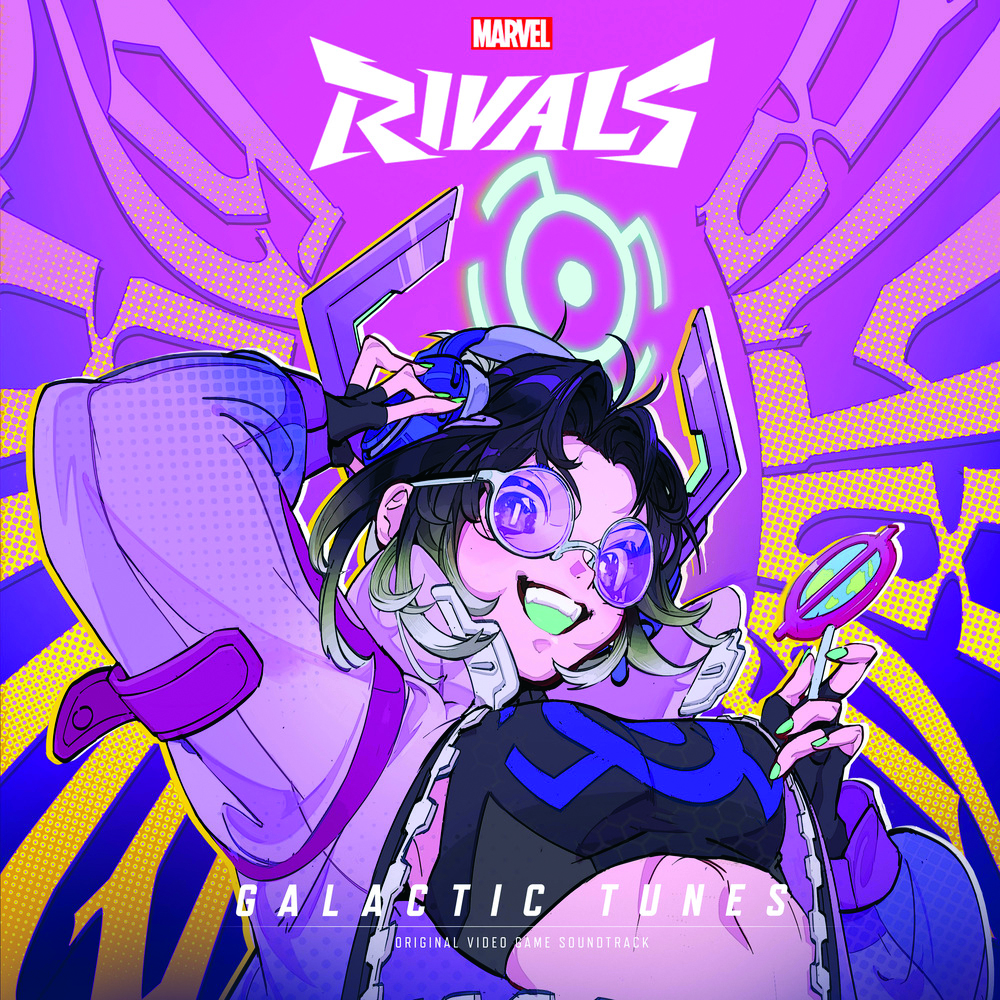
The iconic actions of each Marvel hero
It’s also equally important that the way each hero controls is unique to their inherent qualities and personality traits, expressed through the visual design. “Taking Spider-Man as an example, he possesses a leaner, more muscular physique and when he dons his suit, the defined muscle lines complement his agile and swift character traits,” Ma explains, adding how the costume’s mixture of the iconic spider emblem and innovative cuts evoke both familiarity and a sense of freshness.
“In our skill design, we emphasise the unique abilities and iconic actions of each hero,” he continues. “For example, we incorporate Hulk’s gamma energy, Storm’s control over wind, rain and lightning, and Spider-Man’s webs and acrobatics, among others.”
As a live-service title, Marvel Rivals’ continued success will involve an ongoing roadmap that introduces more content beyond the 33 heroes playable at launch. And key to that will also be that the existing cast of heroes have more costumes that can be unlocked.
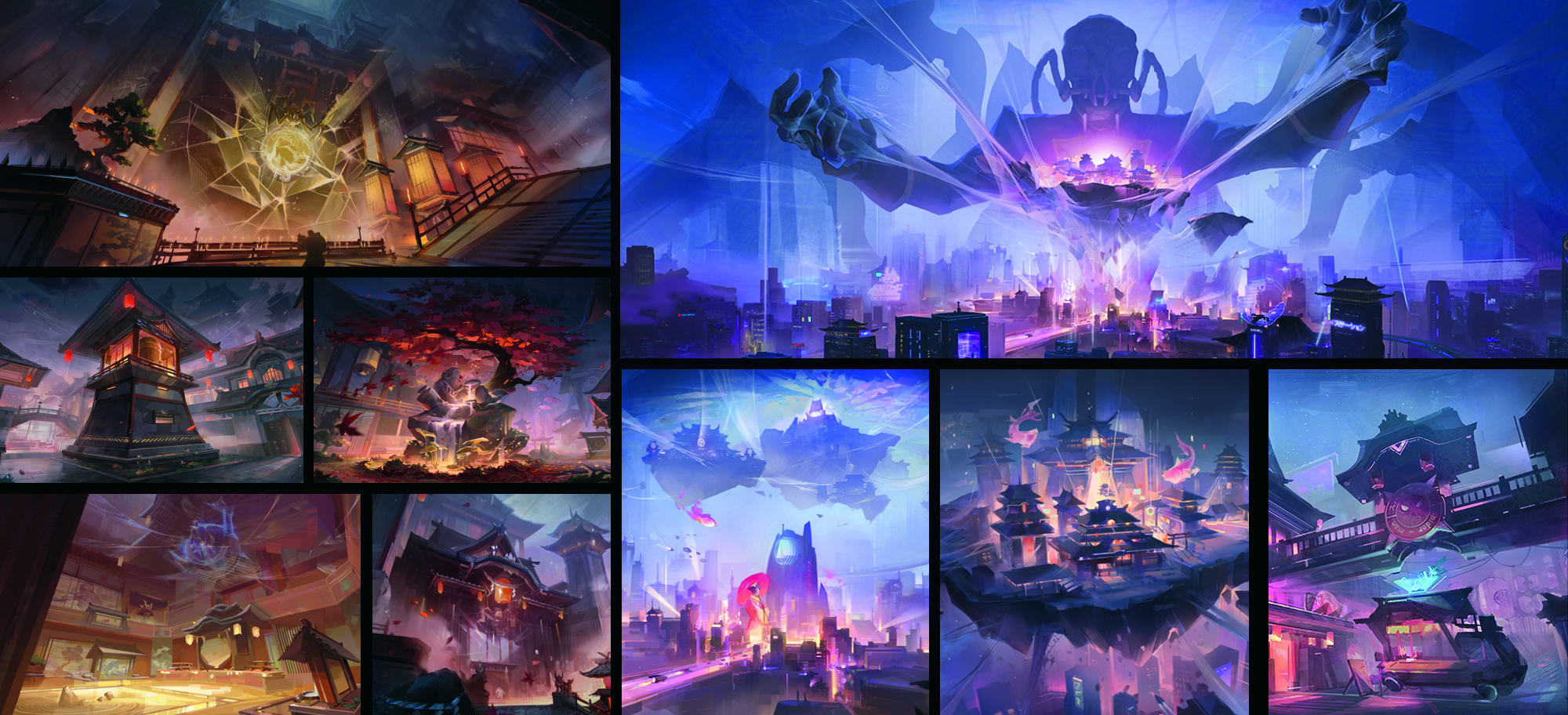
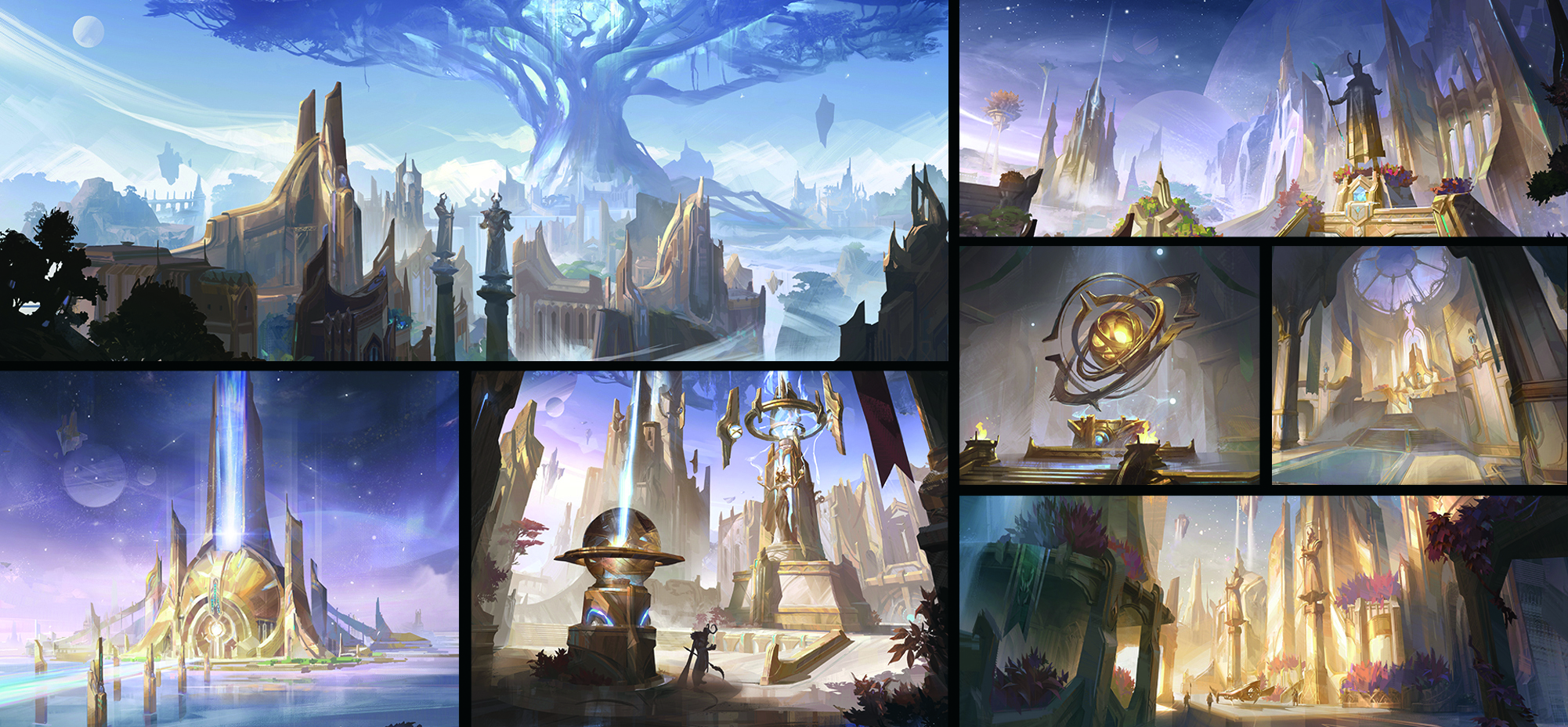
Seasonal themes
Indeed, customisation through cosmetics is the biggest appeal for these games, which means no resting on their laurels for the art team, who are coming up with a mixture of original designs and drawing deeper from Marvel’s vault, while conforming to the game’s aesthetic as well as seasonal themes.
For instance, Eternal Night Falls, the official first season of the game, focused thematically on Dracula and the vampire legion, so featured many new costumes centred around vampire hunters.
“A crucial element of our costume design process is how to quickly find unique and innovative design ideas,” says Ma. This involves creating a mood board with keywords and reference images, as well as collaborating closely with the Marvel Games team to finalise key iconic imagery essential to the costume design.
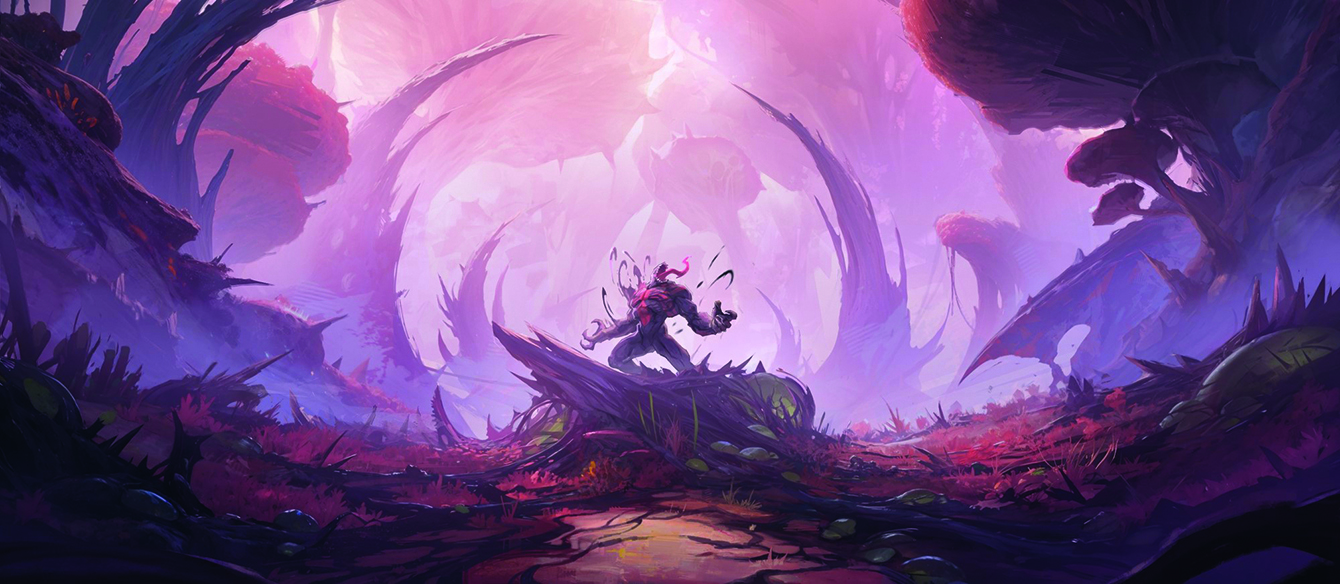

“In practice, mood boards not only allow us to quickly hone in on our creative and essential design ideas, but they also serve as an effective tool for team communication and alignment on design concepts. We’d encourage others to give this approach a try if they find it beneficial.”
It will be interesting to see if other developers will take a leaf from Rivals’ visual style, although for now it certainly seems Western studios are sticking to the trend of photorealism when it comes to developing cinematic storytelling, as with the upcoming Marvel 1943: Rise of Hydra.
Yet Ma is also keen to emphasise Rivals’ art being in service to the narrative, which may seem surprising in a fundamentally fast-paced competitive game, where you’re not necessarily stopping to admire the narrative components being thoughtfully woven into the environments.
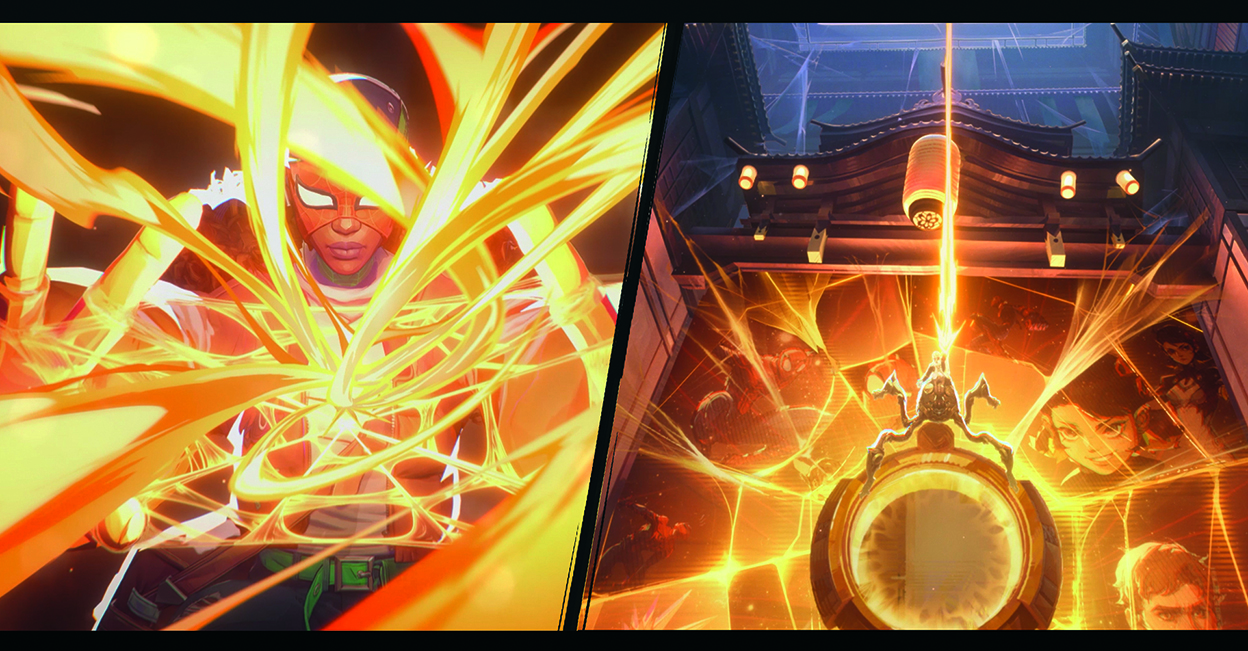
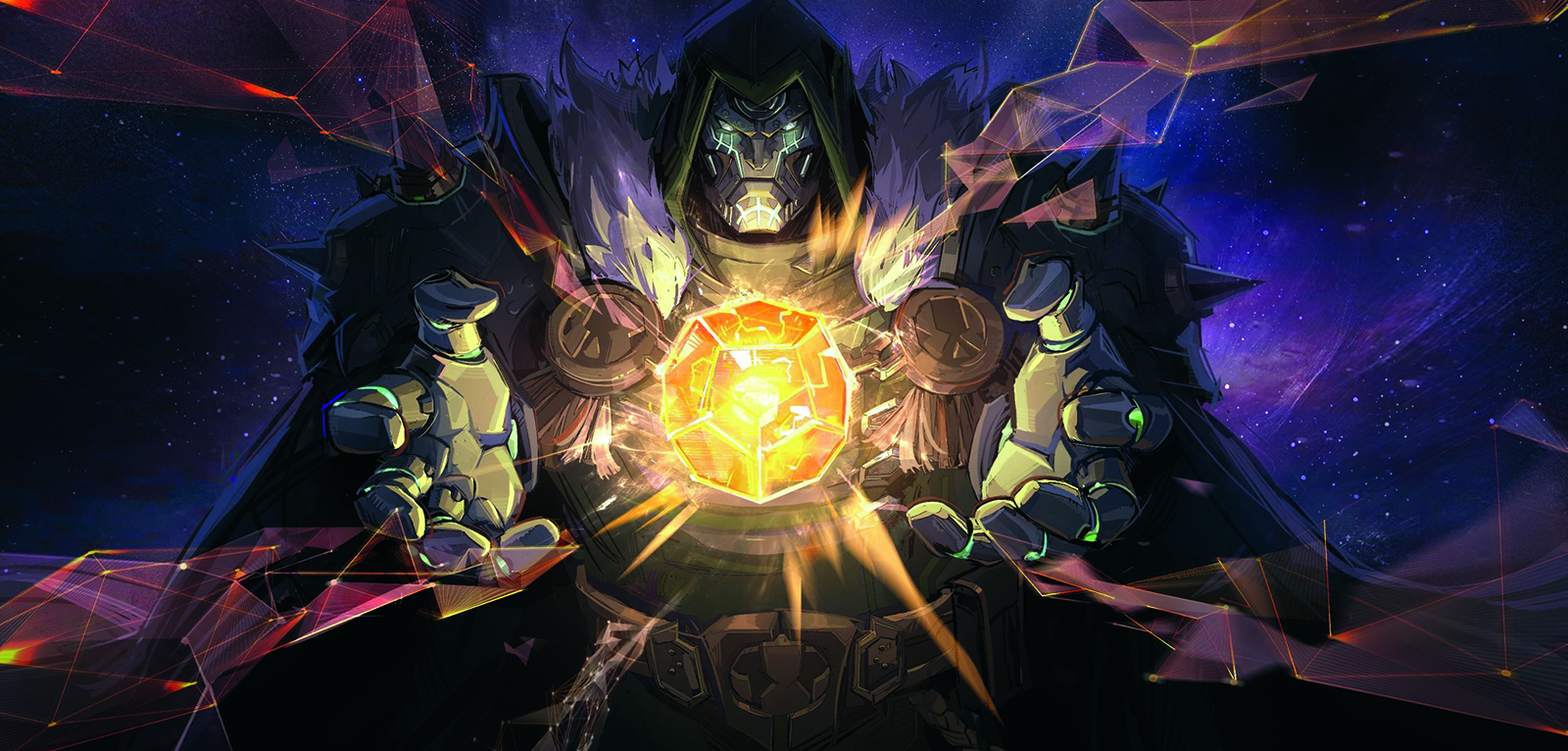
“Everything in Marvel Rivals stems from the intense rivalry between two Doctor Dooms, each striving to outdo the other and assert their claim as the rightful master of the timelines,” says Ma. “Their conflict reverberates across various dimensions and locations, so consequently we place great importance on the significance of each scene within this narrative. Marvel has an incredible 85-year history, during which different authors have continuously reimagined these heroes’ stories across various eras. I believe we are the storytellers of this generation.”
More than just a shooter in debt to fan service where you can have the world’s most iconic heroes duke it out, Rivals then has the substance to contribute to the Marvel canon too. You might say the game’s future looks as bright as its aesthetics.
This content originally appeared in ImagineFX magazine, the world's leading digital art and fantasy art magazine. ImagineFX is on sale in the UK, Europe, United States, Canada, Australia and more. Limited numbers of ImagineFX print editions are available for delivery from our online store (the shipping costs are included in all prices).







